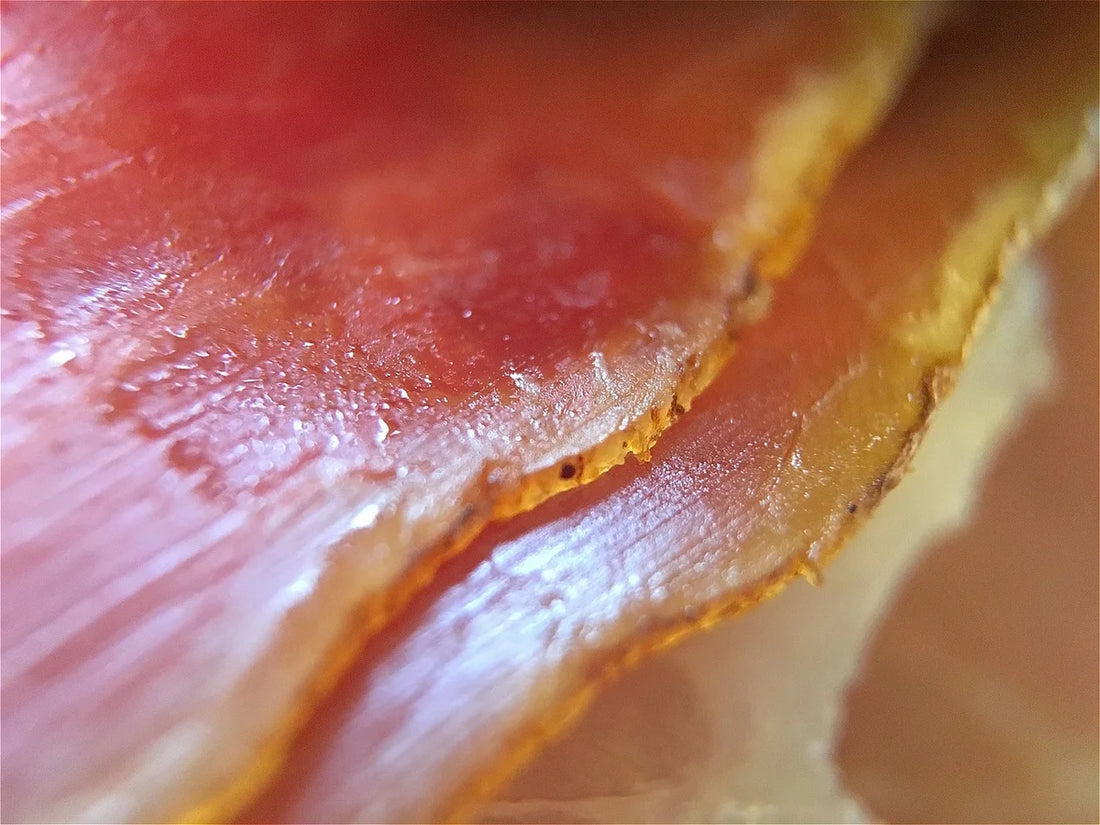Introduction:
If you've ever been to an Italian restaurant or visited Italy, you've probably seen the term prosciutto on the menu. You might also wonder, "What does this term mean?" This article will help you understand what prosciutto is, where it comes from, how it is prepared, and how to enjoy it.
What is prosciutto?
Well, to answer this question, you need to know the meaning of dry-cured meat and dry-aged meat. If you do not, then check the next section of this article.
Prosciutto is an Italian word that translates to "ham" in English. In Italy, however, there are two varieties of prosciutto: Prosciutto Cotto and Prosciutto Crudo. Outside of Italy, prosciutto is known as Prosciutto Crudo. Prosciutto Crudo is a pig's uncooked, dry-cured, and aged hind leg.
Many people believe that prosciutto is the fresh ham that people prepare and serve on special occasions like Christmas. In reality, prosciutto is a ham prepared using a specific Italian procedure. It is an old Italian cuisine that the Italian people have developed to allow them to enjoy the flavor of pure ham whenever they desire.
What Are Cured Meat and Aged Meat
To know how the process of making prosciutto is done, you should understand the aim of each step. So let's take a brief look at the meaning of dry-cured and dry-aged meat.
Cured meat has been treated to prevent infection by bacteria and other microorganisms. Doing so will make the meat safe for people to consume. Pigs’ meat has a soft texture and can easily attack bacteria. Therefore old Italians choose to dry-cure the back leg of the pig.
When someone hangs their meat for more than two months, the meat will become aged. This method of storing meat creates a crusted mold coating around the ham. And in the case of prosciutto, this coat is so important to help the ham store its flavor.
Let's see how Italian people combined these two strategies of treating and storing meat to produce the prosciutto.
The Prosciutto Production Process
Good quality Italian sea salt, air, and time are all that matter in this process. Still, there are differences that occur from one place to another and from one product to another.
Italians produce prosciutto by aging the meat using a process of dry-curing. The process is divided into two proceeding levels. Each production level must be done precisely and carefully to produce fine-quality prosciutto.
Curing the ham is the first stage in making prosciutto. The goal at this stage is to remove moisture, blood, and additional salt from the meat. Microorganisms will harm the ham fabric if any of them stay within- then the ham will no longer be edible.
The curing procedure begins by tagging the ham. The button used to tag the ham will inform you when the curing process began, which will help you determine the age of the prosciutto.
The ham should now be salted using your hands. The initial salt you should use in this process is mineral Italian sea salt. However, there are firms outside of Italy that use any salt. The most important thing to remember while salting is not to add a lot. Prosciutto is not preferred to be so salty; in Italian tradition, this process should be done me a salt master. The salt-master is someone expert in salting ham, especially for making prosciutto. This part of the process is called the sole step (only one person should do so).
The ham should be in salt for at least 15 days and can be up to 2 months. Still, measuring this period depends on the leg's size and weight. After that, all the salt will be rinsed off the ham. In some places, people might place the ham in a wine path for about a day, but this is not the traditional way.
Now next, the leg will enter the dry age. After raising the salt, the ham will be seasoned. The seasoning type can be only salt (Prosciutto di Parma) or a mix of your favorite spices. After that, the ham will be left to be cured and dried for 1 to 3 years. The result will be fine Prosciutto Crudo; aged, cured, and dried yet full of flavor.
Prosciutto Recipes
What is the most renowned prosciutto recipe, according to an Italian? You will be told that prosciutto is a recipe in and of itself; simply select the complementary you prefer. The reason is people in Italy prefer to consume prosciutto uncooked. They say: prosciutto is total de sola which means it is perfect on its own with nothing just sliced and eaten. But if you are looking for some famous complimentary to have with your prosciutto, here you go:
● Mozzarella and cream cheese can be a great meal, along with your thin slices of prosciutto.
● The Italian classical pair for prosciutto is fruit. The sweet taste of prosciutto goes perfectly with fruits. Italians usually like to warp the prosciutto slices around figs, cantaloupe, and pears.
● Extra virgin olive oil dazzles on top of the prosciutto with grilled rustic bread under it. Make in this way and enjoy the unforgivable taste.
Red wine is the finest drink to have with any meal containing uncooked prosciutto.
However, many people do not tend to eat prosciutto without cooking. Therefore I will list some of the famous ways to cook prosciutto:
● One of the simplest methods is to just place it on top of your pizza and bake them together. There's no need to season or add anything else once you've placed the prosciutto.
● One of the greatest ways to prepare prosciutto is pan-frying. After slicing your prosciutto into stripes, heat some olive oil in a pan and add your strips. Brown them for about 4 minutes or until crispy. You may combine them with pasta, dip them in your favorite sauce, or just sprinkle them on top of any other meat. The flavor will be buttery, and the prosciutto seasoning will enhance the flavor of your dish.
● Now, as Italy is known for pasta, this dish is purely Italian. Pasta with diced prosciutto can be a great dish to serve at family gatherings. Bring your pan to the stove and cook for six to eight minutes the following: minced garlic, chopped onion, and diced prosciutto in olive oil. Add the diced tomatoes to the pan and for seasoning, add salt and paper with dried Italian herbs. Cook them together until the mixture is hot, then add your boiled spaghetti. So simple and delicious! You'll enjoy it.
Before eating or cooking, always scrape the outside layer to eliminate any fungus that has grown while the ham has been stored.
What Makes Prosciutto Special?
Eating prosciutto is a one-of-a-kind experience. The flavor is distinct from that of other aged-cured meats. Actually, depending on the seasoning used, prosciutto may have infinite tastes.
The age of the prosciutto influences its flavor and texture. Young prosciutto has a sweet flavor and a moist-soft texture when eaten. This dish will taste much better with a slice of cheese and a cup of black tea. If you eat ancient prosciutto, you will notice a firm-dry texture with a fine-drawn nuanced flavor.
Sources:
https://www.thespruceeats.com/what-is-prosciutto-1328662
https://parmacrown.com/what-is-prosciutto/
https://www.bradleysmoker.com/blog/2021/11/28/smoked-cured-aged-and-dehydrated-meat-whats-the-difference/
https://www.thespruceeats.com/prosciutto-toscano-2018496
https://www.eataly.com/us_en/magazine/how-to/perfect-prosciutto-pairings/
https://www.livestrong.com/article/474082-how-to-cook-prosciutto

